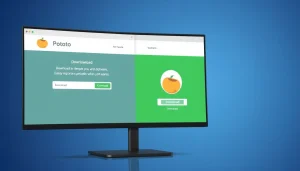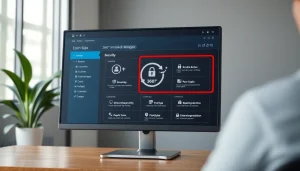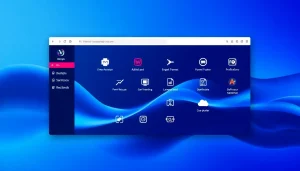Understanding Part Exchange: A Comprehensive Guide for Vehicle Owners
What is Part Exchange?
Definition and Overview
Part exchange, commonly referred to in the context of automobile sales, is a transactional arrangement where an individual trades in their existing vehicle as part of the payment for a new or used vehicle. This practice is prevalent across various industries, but in automotive sales, it allows for a seamless transition from one vehicle to another, streamlining the buying process for consumers. In essence, the value of the old vehicle is deducted from the overall cost of the new vehicle, minimizing the cash required upfront. For a deeper understanding of its various applications, you can explore resources like Part Exchange.
How Part Exchange Works
The process of part exchange typically begins with the owner visiting a dealership or a private seller where they express interest in acquiring a new vehicle. Following this, the dealership assesses the value of the vehicle to be exchanged, considering factors such as its age, condition, mileage, and market demand. Once a valuation is agreed upon, it is deducted from the total price of the new vehicle, with the owner finalizing the difference either through financing, cash, or a combination of both. Ultimately, this offers convenience, as it eliminates the need to sell the previous vehicle independently—a task that can often be challenging and time-consuming.
Benefits of Part Exchange
Part exchange carries several advantageous features for the vehicle owner:
- Simplicity and Convenience: The process is typically straightforward, minimizing the hassle associated with private sales.
- Instant Financial Benefit: The value of the old car is immediately applied to the cost of the new car, providing a clear financial picture.
- Lower Overall Cost: By utilizing the value of the old car, buyers may secure a better deal or lower financing costs on their new purchase.
- Time-Saving: Part exchanging circumvents the often lengthy process of selling a vehicle, giving buyers more time to focus on their new purchase.
Understanding the Part Exchange Process
Steps to Part Exchange Your Vehicle
Understanding the steps involved in part exchanging a vehicle is crucial for ensuring a smooth transition. Here is a simplified process:
- Research Your Vehicle’s Value: Use online valuation tools to get an estimate of your vehicle’s trade-in value.
- Prepare Your Vehicle: Clean and maintain your vehicle to ensure it presents well.
- Visit Dealerships: Approach local dealerships to get appraisals. Bring all relevant documentation.
- Negotiate Terms: Discuss the trade-in value and finalize terms for the new vehicle.
- Final Paperwork: Complete the transactional paperwork, ensuring to review all terms before signing.
Documentation Needed for Part Exchange
To facilitate a smooth part exchange process, it is prudent to gather several key pieces of documentation:
- Vehicle Registration Document (V5C): This confirms your ownership of the vehicle and provides necessary details about its history.
- Proof of Identity: Identification such as a driving license or passport may be required.
- Service History: Any service records enhance the appeal of your vehicle and confirm its maintenance history.
- Previous MOT Certificates: These documents can help establish the vehicle’s fitness for the road, contributing to a higher valuation.
Common Questions about Part Exchange
As with any significant financial decision, potential exchange participants often have queries:
- Can I part exchange a vehicle with outstanding finance? Yes, but it must be settled before the new purchase can be finalized.
- Is it better to sell privately or part exchange? While part exchange is more convenient, private sales can often yield higher profit margins if time allows.
- Will my vehicle be inspected thoroughly? Yes, dealers often perform comprehensive inspections which may affect the final valuation.
Advantages of Part Exchange Over Selling Privately
Financial Benefits
While selling a vehicle privately could yield a higher sale price, there are noteworthy financial benefits to part exchange. With part exchange, buyers avoid the additional costs associated with private sales such as advertising fees, repair costs to make the vehicle market-ready, and potential negotiations that can lower final sales value. More importantly, the immediate application of the vehicle’s value against the new purchase effectively reduces the priced-outlay upfront—often reflected in lower financing costs.
Time and Convenience Factors
Time is an invaluable asset, and the part exchange process respects that. Unlike private sales, which can drag on indefinitely while searching for the right buyer, part exchange allows you to complete the transaction in one day. This is particularly advantageous for individuals looking to upgrade quickly or needing to change their vehicle for practical reasons. The faster resolution of the sale leads to greater flexibility in mobility and shifts focus back to the new purchase rather than lingering deals.
Safety and Security in Transactions
Part exchange offers enhanced safety and security compared to private sales. Dealing with an established dealership reduces the risks associated with private sales, such as scams and potentially unsafe buyer interactions. There’s often less ambiguity regarding payment, and dealerships typically have procedures in place for handling transactions securely. This aspect is especially beneficial for those who may feel uneasy or wary of the negotiations that come with private sales.
Choosing the Right Dealership for Part Exchange
What to Look For in a Dealership
Selecting the right dealership for part exchange is crucial. Consider the dealership’s reputation, the experiences of previous customers, and the variety of services offered. Look for dealerships that provide fair and transparent evaluations and have a good selection of vehicles to choose from. Customer service is paramount—prioritize establishments that are known for their ability to communicate effectively and engage with customers respectfully.
Evaluating Part Exchange Offers
Not all part exchange offers are alike. It’s important to critically evaluate offers from different dealerships. Factors to consider include:
- Market Comparison: Compare offers against local market values for similar vehicles.
- Additional Incentives: Some dealerships may offer allowances for upgrades or discounts on accessories.
- Final Sales Price: Consider how the exchange value compares to the overall price of the new vehicle.
Maximizing Your Vehicle’s Value
To get the most value out of your part exchange, make sure to prepare your vehicle adequately. Cleaning your car, fixing minor issues, and providing complete service records can elevate your vehicle’s perceived value. Furthermore, timing your part exchange to coincide with peak purchasing seasons—commonly spring and summer—might yield better offers as dealerships often seek to bolster their inventories during these periods.
Comparing Part Exchange with Other Options
Part Exchange vs. Trade-in
While ‘part exchange’ and ‘trade-in’ are terms often used interchangeably, it is important to note that trade-in typically denotes a more transactional approach, often within the context of new vehicle purchases. Part exchange might involve a broader array of vehicles, providing more flexibility for the seller. However, the fundamental principle remains unchanged: both methods utilize the current vehicle’s value as leverage in acquiring something new.
Part Exchange vs. Direct Sale
Choosing between part exchange and a direct sale often depends on individual circumstances. Direct selling may yield a higher financial return but often comes with the drawbacks of time and effort spent on advertising and engaging potential buyers. There also exists a market risk—selling privately may take longer if the market is slow or your vehicle is less desirable. Conversely, part exchanging offers immediate benefits without the prolonged wait.
When to Choose Part Exchange
Part exchange is a suitable option under various circumstances, particularly for individuals in urgent financial needs or those desiring quick vehicle changes. It is ideal for buyers who appreciate the simplicity of the process over maximizing financial returns. On the other hand, those with flexible timelines may consider private selling as a means to secure more value if they are willing to invest the necessary effort and time into finding a buyer.














Post Comment